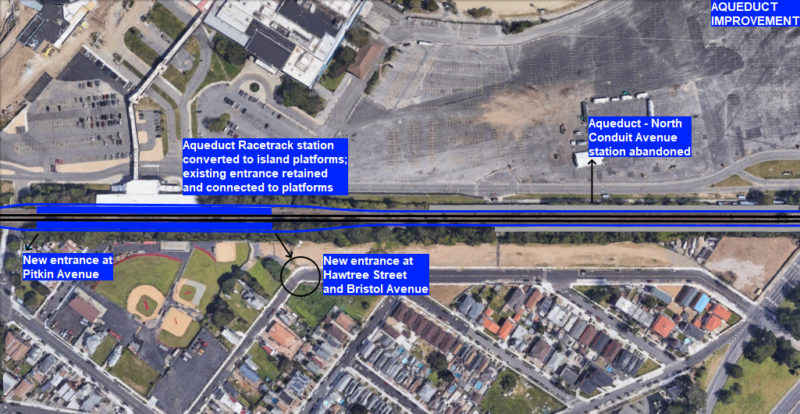UPDATE (01.09.2023): Post revised to reflect v0.8.0 of the enhanced NYC subway. Most figures removed since they relate to older versions of the enhanced NYCS.
Welcome back to my ongoing NYTIP series! When I introduced NYTIP, I outlined a three-point plan for fixing the NYC Subway system: enhance, extend, and expand. This post summarizes v0.8.0 of the enhanced NYC subway, which addresses the first point.
Note: Click any image to enlarge.
v0.8.0 implements the six-minute city concept forwarded by Alon Levy and other advocates. This is a working beta; I am working on v1.0.0, which I’ll describe in future posts. The six-minute city paradigm allows opportunities for additional service enhancements, as described below.
I. The Bronx and Upper Manhattan
Concourse and Inwood Line Enhancements
v0.8.0 does not include the Central Park West de-interlining, but does not preclude it either.
On the Concourse line in The Bronx, the C local runs to Bedford Park Boulevard all day, while the D’s peak-directional express service expands to off-peak hours, including weekends. Both C and D trains run 10 trains per hour (TPH) all day. This gives Bronxites direct service to several major hubs – namely, Port Authority Bus Terminal, Penn Station, and the World Trade Center. These changes should, encourage ridership and discouraging driving on the Grand Concourse.
On the Inwood line in Upper Manhattan, the A runs express to Inwood and the B runs local to Washington Heights. A train service runs every 6 minutes or better all day, while the B runs every 6 minutes all day.
2/5 Service in The Bronx
v0.8.0 prescribes an express/local swap to remove a merging conflict; 2 trains now run express between East 180th Street and The Hub – 149th Street, while 5 trains run local. Neither line splits between the White Plains Road and Dyre Avenue branches, ensuring frequent service on both.
Several stations on the 2/5 line south of East 180th Street station sit on tight curves; as such, the enhanced NYC Subway includes several platform straightening projects described in this post.
II. Manhattan
Central Park West and 8th Avenue Line Enhancements
On the Central Park West trunk line, the A and D run express, while the B and C run local, Except for more frequent peak-hour A service, all CPW services would operate every 6 minutes all day. Even spacing between trains reduces conflicts between trains at 145th Street and 59th Street. On 8th Avenue, the A and E run express and the C runs local. To preserve regularity on 8th Avenue, the C terminates at the World Trade Center station, while A and E trains continue to Brooklyn.
Broadway Improvement
v0.8.0 addresses merging conflicts on the Broadway line with N and Q trains running express and R and W trains running local. N and Q trains serve the Second Avenue Subway (SAS), while R and W trains serve the 60th Street corridor and Queens. All services run 10 TPH all day; during peak hours, the W runs an extra 4 TPH between Astoria and Canal Street to preserve service levels on the Astoria line in Queens.
F/M Swap
On the Queens Boulevard trunk line, the F runs via 53rd Street and the M runs via 63rd Street. This change removes some conflicts with the E in Queens. On 63rd Street, service increases on the M offset the capacity reduction from the M’s shorter 480-foot trains.
10th Avenue – 41st Street Station
To encourage ridership on Manhattan’s west side, v0.8.0 includes an infill station at 10th Avenue – 41st Street on the 7 line using an existing provision. The Hell’s Kitchen area is very active and would benefit from such a station.
III. Brooklyn
South Brooklyn
The South Brooklyn redesign contemplated by v0.8.0 removes the chief source of delay on the B, D, N, Q, and R lines. B and D trains serve the Brighton line, while J, N, Q, and W trains serve 4th Avenue. On the 4th Avenue trunk line, the N and Q run express and the J and W run local. The J and W trains replace the D via West End, while the Q replaces the R to Bay Ridge; N service in Brooklyn is unchanged.
On the Brighton line, since the B is a shorter route than the D, the B runs local to Ocean Parkway and the D runs express to Coney Island.
On the Culver line, given increases in F and G service made possible by the “six-minute city” paradigm, there would be limited <F> express service between Jay Street – MetroTech and Church Avenue in both directions.
Eastern Parkway Line Enhancements
The Eastern Parkway de-interlining allows service increases on the 2, 3, 4, and 5 lines by fixing both the infamous Nostrand Junction and the inefficient Flatbush Avenue – Brooklyn College terminal. 2 and 3 trains serve the Nostrand Avenue branch to Brooklyn College, while 4 and 5 trains continue eastward on Eastern Parkway. East of Franklin Avenue, the 4 runs local to East New York – New Lots Avenue, while the 5 runs express to Crown Heights – Utica Avenue.
Fulton Street Line Enhancements
On the Fulton Street trunk line, A express service to Queens is unchanged, while the E replaces the C as the Fulton Street local. E trains run to a new infill terminal inside the Pitkin Yard, which is underneath the Linden Plaza apartment complex.
Note: If Brooklyn and Queens riders prefer, the A could run local and the E could run express to Queens instead.
Franklin Avenue Shuttle Enhancement
The Franklin Avenue Shuttle has a single-track bottleneck that limits daytime service to every 10 minutes. In v0.8.0, the single-track segment north of Botanic Garden would be double-tracked to allow significant service increases.
Broadway El Improvements
v0.8.0 includes a transfer between the Hewes Street (J/M) station and the Broadway (G) station to enhance connectivity. While an in-system transfer is preferred, an out-of-system transfer is doable without capital investment; the latter could serve as a bridge to the former.
IV. Queens
Queens Boulevard Line Enhancements
Through the Queens Boulevard partial de-interlining, the E and F run express and the M and R run local. E and F trains run together via 53rd Street, eliminating a merging conflict west of 36th Street station. To mitigate local train congestion at Forest Hills, the R runs to Jamaica – 179th Street; this allows F express service east of Forest Hills. Due to capacity constraints at Jamaica Center, there would be limited peak-hour E express service to Jamaica – 179th Street in both directions.
Astoria Line Service
On the Astoria line, the W is the sole service. To make up for the loss of the N, the W runs 14 TPH during peak hours (with 4 of those 14 turning at Canal Street) and 10 TPH during off-peak hours.
Aqueduct Racetrack Station
[Fig. 1] Improvements at Aqueduct Racetrack station.
To improve A service to the Rockaways, v0.8.0 replaces the northbound side platform at Aqueduct Racetrack with island platforms for bidirectional service. The new platforms include new entrances to encourage ridership. The Aqueduct – North Conduit Avenue station would be abandoned due to its proximity to the improved Aqueduct Racetrack station, allowing a minor speed increase.
V. Staten Island
v0.8.0 includes service increases on the SIR and an infill station at Rosebank. These increases are contingent on service increases on the Staten Island Ferry and NYC Ferry services at St, George. As I plan to incorporate these improvements in v1.0.0, I will expound on them in a future post.
Summary
The suite of investments comprising v0.8.0 are as follows:
Operational Investments
- Central Park West improvement
- South Brooklyn redesign
- Broadway Improvement
- Queens Boulevard partial de-interlining
- Eastern Parkway de-interlining
- South Bronx partial de-interlining
- Crew and subway car reassignments, as needed, to support new service patterns
Capital Investments
- Platform straightening and widening at 4 stations in The Bronx, including right-of-way (ROW) straightening at West Farms Square
- New Nostrand Junction and tail tracks south of Flatbush Avenue – Brooklyn College
- Franklin Avenue Shuttle double-track
- Infill Stations
- 10th Avenue – 41st Street
- Linden Plaza (Pitkin Yard)
- Aqueduct Racetrack
- Rosebank
- New subway cars, switches, and power substations, as needed, to support service increases
- Other investments, such as ADA upgrades, to encourage ridership
Taken together, these investments should accomplish a key goal of NYTIP under the “six-minute city” paradigm – service every 6 minutes or better on almost every line, with more frequent service dictated by ridership.
Downloads
- Enhanced NYCS v0.8.0 Service Guide (Microsoft Excel file – 30.1 kB)
Note: Due to forthcoming updates for v1.0.0, the mock timetable is no longer available.

